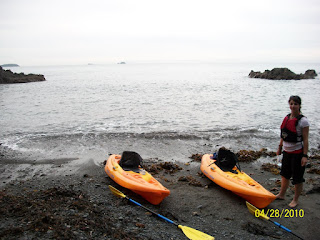Today I say farewell to Mary and Caz. After being a threesome since mid-March, we are probably ready to go our separate ways for now, but I will miss winding up ‘Sister’ Mary and also Caz’s random moments of hysteria. They are going to Nimbin Mardi Gras, a festival / rally in favour of legalizing cannabis set in the hippy hangout of Nimbin, the capital of the ‘alternative lifestyle’ in Oz. They will then be going on a sailing trip around the Whitsundays, which I am slightly jealous about.
Meanwhile, I move hostel to the Arts Factory, which has been recommended to me as a hostel with a difference, a place where you can take part in painting classes or learn to play the didgeridoo and its attached facilities include a lounge sofa cinema and a recording studio. Not that any of these are come free with the accommodation though. There is also a pool with a jacuzzi, a café and an outdoor bar restaurant and a number of benches and hammocks to lounge about in. There are tepees to sleep in too, but all the spaces are booked when I arrive and I think I would prefer a room anyway, as the tepees are by the restaurant or the camp ground where hundreds of ragged tents are pegged and I don’t think I would get much sleep.
I go for a walk after leaving my luggage at the hostel and, passing through to the south side of town, I spot a van with a trailer of kayaks. This is Byron Bay Sea Kayaks and they advertise themselves as offering a dolphin spotting sea kayaking experience. Although I have already been swimming with dolphins in Kaikoura and seen more at the Bay of Islands while in New Zealand, I am quite keen to see if they will come up close to the kayaks, which may be the best way to interact with them. However, to be honest, I like the look of the waves today and think it will be good fun out there, so I pay my money.
Our trip departs from Clark’s Beach, which is at the south end of Byron. It is the only western facing beach on Australia’s east coast, which may be something of an explanation as to why this is where Byron Bay’s best surf is. The kayaks are two berth and I am sharing mine with Mary Beth, a Canadian and one of our guides. We are the last of the rafts to go out and, with the sizeable swell I watch with a mixture of amusement and impatience as one by one each of the preceding kayaks is capsized and pushed northwards by the tide. I am quite glad to have Mary Beth steering at the stern, as we smugly leap over the waves without incident, except for the banging down once we are over the peak of each one.
The dolphins tend to congregate near ‘The Pass’, the surfing hot spot by the headland that punctuates the end of Clark’s Beach. The surfing today looks spectacular, but we spend a long time hanging around waiting for dolphins come to us, the guides explaining that if we go searching for them they will just swim away. Some people see some diving through the waves in the distance, or at least some of the guides see them in the distance. What I see could be dolphins, or they could be surfers bobbing up and down the swell. There are a couple of tortoises that come swimming near us though, poking their little heads up out of the water.
On the way back to shore, Mary-Beth tells me that we will definitely be going into the water because there is no way the kayaks will stay upright with these size of waves going onto the beach. We catch a nice big one and do manage to surf it for a while by leaning sharply backwards while M-B uses her paddle as the oar trying to keep us straight, but eventually we are rolled over and receive our dunking. This was probably the highlight of the day for me.
Because we haven’t quite had the dolphin spotting experience, I am invited to come back again for the next morning’s trip for no extra charge.
I spend the evening in the Arts Factory bar watching an ageing blues band play to a gradually diminishing and increasingly disinterested post happy hour audience.
 |
| a fellow guest at the Arts Factory |
 |
| and a nonchalant iguana |
 |
| Byron Bay Train Station... |


































